Blog
Purchased my first Oud today, a Bavly commercial low buck model from Cario, Egypt . Now I hope I can tune and keep it tuned. Then the many maqamat to learn. Wow.
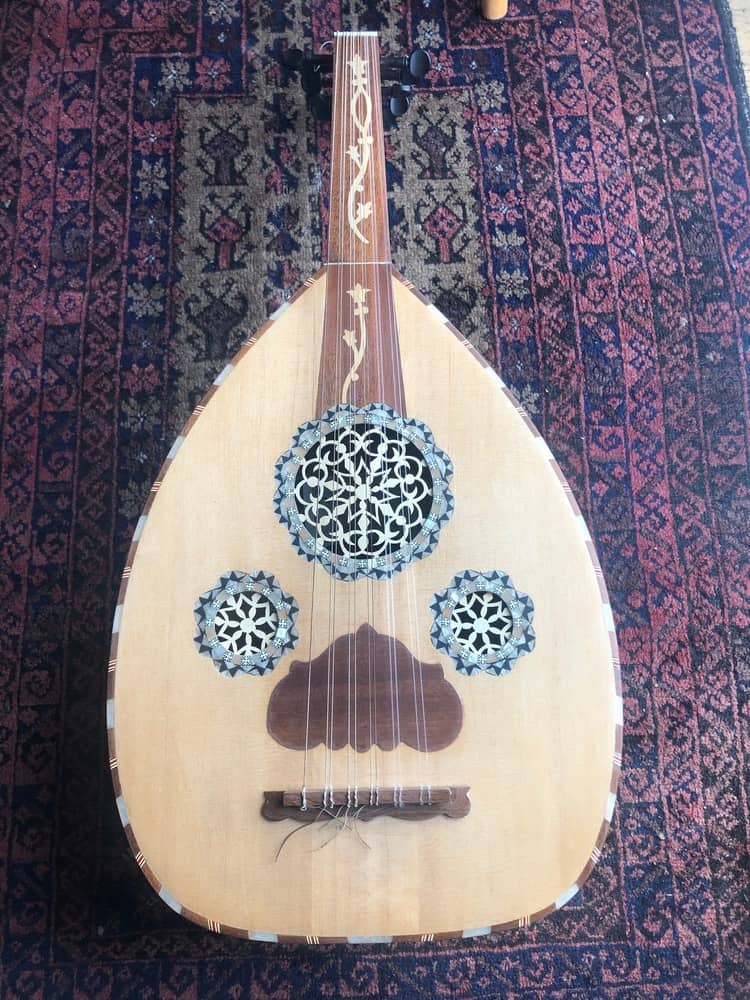
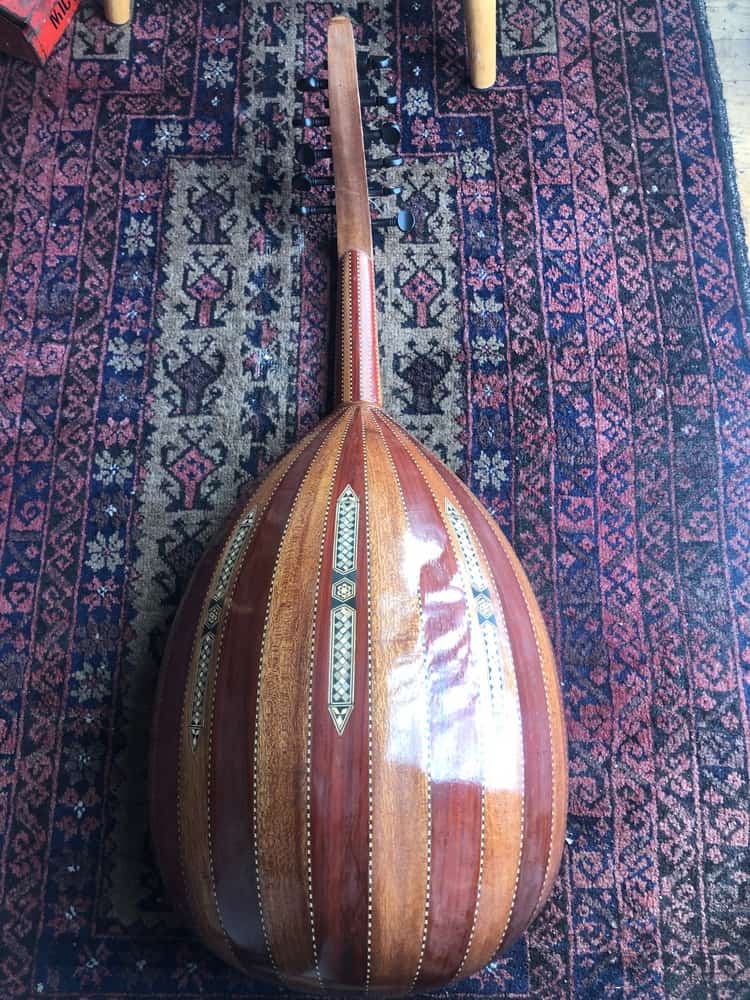
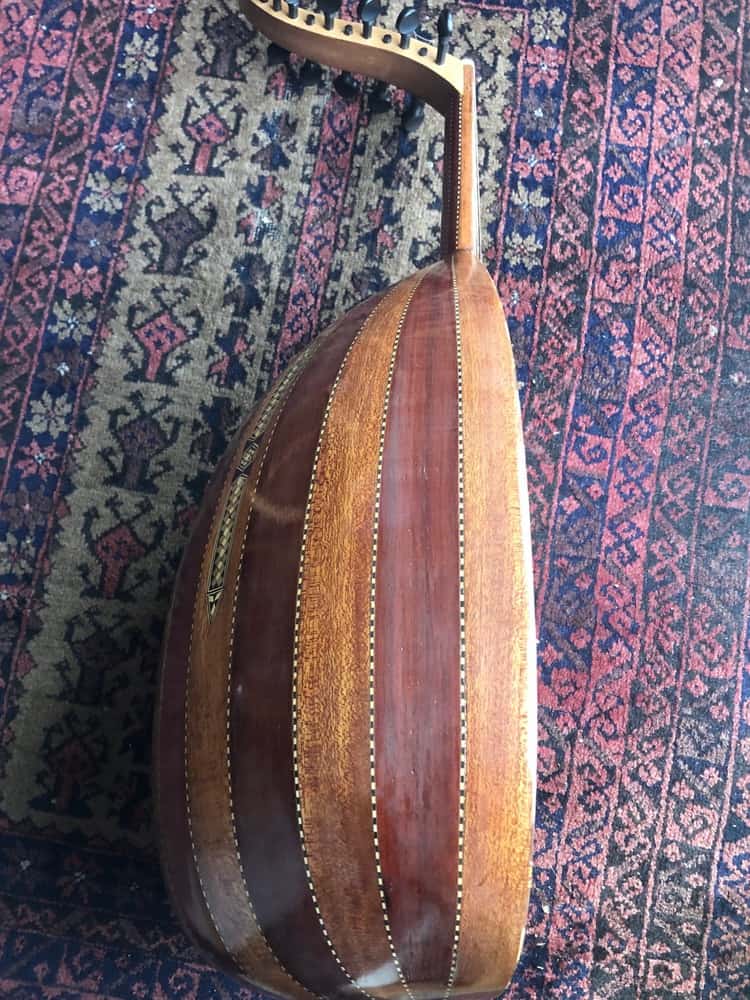
Beautiful island universe Messier 94 lies a mere 15 million light-years distant in the northern constellation of the Hunting Dogs (Canes Venatici). A popular target for Earth-based astronomers, the face-on spiral galaxy is about 30,000 light-years across, with spiral arms sweeping through the outskirts of its broad disk. But this Hubble Space Telescope field of view spans about 7,000 light-years across M94‘s central region. The featured close-up highlights the galaxy’s compact, bright nucleus, prominent inner dust lanes, and the remarkable bluish ring of young massive stars. The ring stars are all likely less than 10 million years old, indicating that M94 is a starburst galaxy that is experiencing an epoch of rapid star formation. The circular ripple of blue stars is likely a wave propagating outward, having been triggered by the gravity and rotation of a oval matter distributions. Because M94 is relatively nearby, astronomers can better explore details of its starburst ring.
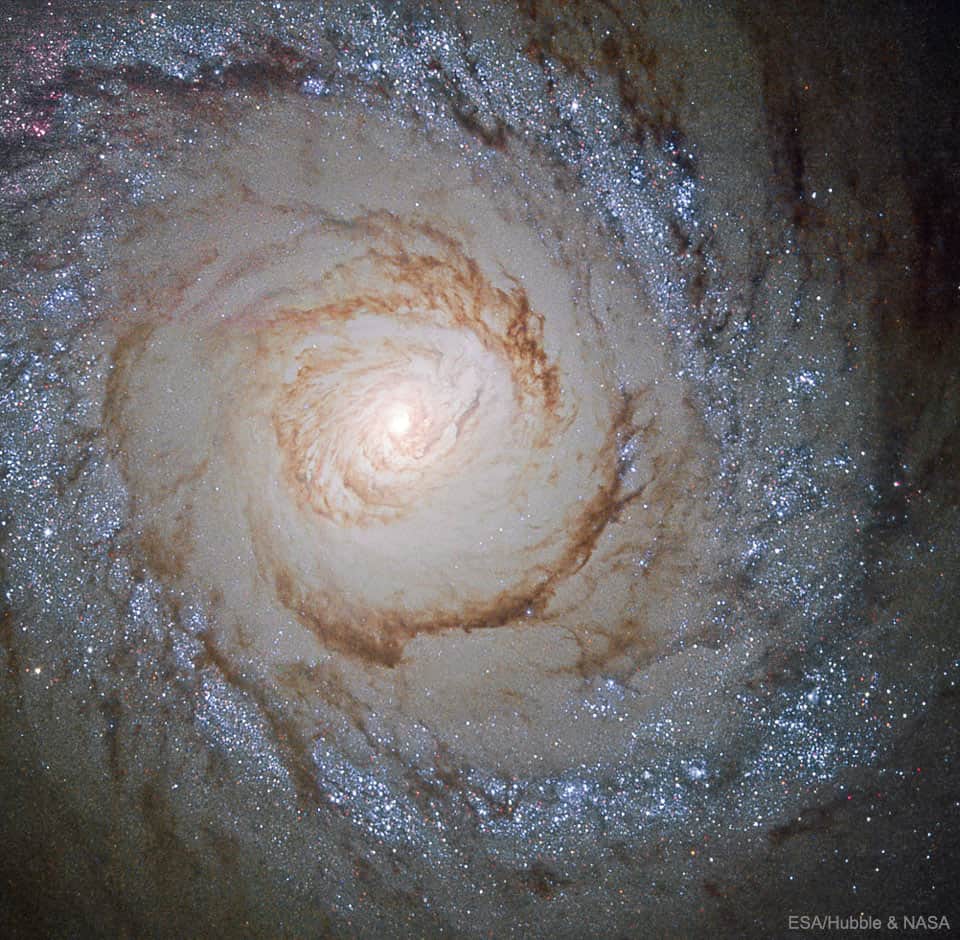
John Francis Anthony “Jaco” Pastorius III (/ˈdʒɑːkoʊ pæˈstɔːriəs/, December 1, 1951 – September 21, 1987) was an American jazz bassist who was a member of Weather Report from 1976 to 1981. He worked with Pat Metheny and Joni Mitchell, and recorded albums as a solo artist and band leader. His bass playing employed funk, lyrical solos, bass chords, and innovative harmonics. As of 2017, he is the only electric bassist of seven bassists inducted into the DownBeat Jazz Hall of Fame, and has been lauded as one of the best electric bassists of all time.
Pastorius suffered from drug addiction and mental health problems throughout his professional life, and despite his widespread acclaim had problems over the latter part of his life holding down jobs due to his unreliability. In frequent financial trouble, he was often homeless throughout the mid 1980s. In 1987, he got into a fight outside of a music club in South Florida and died as result of injuries sustained in the fight. He was only 35 years old.
After his death, his work continued to influence musicians, being elected to the DownBeat Hall of Fame in 1988. He was the subject of the 2014 documentary film Jaco.
John Francis Pastorius was born December 1, 1951, in Norristown, Pennsylvania. He was the oldest of three boys born to Stephanie, his Finnishmother, and Jack Pastorius, a charismatic singer and jazz drummer who spent much of his time on the road. His family moved to Oakland Park in Fort Lauderdale when he was eight.
By 1968–1969, at the age of 17, Pastorius had begun to appreciate jazz and had saved enough money to buy an upright bass. Its deep, mellow tone appealed to him, though it strained his finances. He had difficulty maintaining the instrument, which he attributed to the humidity in Florida. When he woke one day to find it had cracked, he traded it for a 1962 Fender Jazz Bass. In his teens he played bass guitar for Wayne Cochran and the C.C. Riders.
In the early 1970s, Pastorius taught bass at the University of Miami, where he befriended jazz guitarist Pat Metheny, who was also on the faculty. With Paul Bley, Pastorius and Metheny recorded an album, later titled Jaco (Improvising Artists, 1974). Pastorius then played on Metheny’s debut album, Bright Size Life(ECM, 1976). He recorded his debut solo album, Jaco Pastorius (Epic, 1976) with Michael Brecker, Randy Brecker, Herbie Hancock, Hubert Laws, Pat Metheny, Sam & Dave, David Sanborn, and Wayne Shorter. Before recording his debut album, Pastorius attended a concert in Miami by the jazz fusion band Weather Report. After the concert, he approached keyboardist Joe Zawinul, who led the band. As was his habit, he introduced himself by saying, “I’m John Francis Pastorius III. I’m the greatest bass player in the world.”Zawinul admired his brashness and asked for a demo tape. After listening to the tape, Zawinul realized that Pastorius had considerable skill. They corresponded, and Pastorius sent Zawinul a rough mix of his solo album.
After bassist Alphonso Johnson left Weather Report, Zawinul asked Pastorius to join the band. Pastorius made his band debut on the album Black Market(Columbia, 1976), in which he shared the bass chair with Johnson. Pastorius was fully established as sole band bass player for the recording of Heavy Weather(Columbia, 1977), which contained the Grammy-nominated hit “Birdland“.
more...John Paul Densmore (born December 1, 1944) is an American musician, songwriter, author and actor. He is best known as the drummer of the rock band the Doors, and as such is a member of the Rock and Roll Hall of Fame. He appeared on every recording made by the band. Densmore is also noted for his veto of attempts by the other two Doors members, in the wake of singer Jim Morrison‘s 1971 death, to accept offers to license the rights to various Doors songs for commercial purposes, as well as his objections to their use in the 21st century of the Doors name and logo. Densmore’s lengthy court battles to gain compliance with his veto ended with total victory for him and his allies in the Morrison estate
Densmore has worked additionally in the performing arts as a dancer and actor, and written successfully as both a playwright and the author of two books on the topic of the Doors. The many honors he shares with the other Doors include a Grammy Award for lifetime achievement and a star on the Hollywood Walk of Fame.
Born in Los Angeles on December 1, 1944, Densmore grew up playing piano and later took up drums/percussion for the marching band at his school. He also played timpani in orchestra. Densmore attended Santa Monica City College and California State University, Northridge; at the latter he studied ethnic music under jazz cellist Fred Katz.
more...Louis Allen Rawls (December 1, 1933 – January 6, 2006) was an American singer, songwriter, actor, voice actor, and record producer. Rawls released more than 60 albums, sold more than 40 million records, and had numerous charting singles, most notably his song “You’ll Never Find Another Love like Mine“. He worked as a film, television, and voice actor. He was also a three-time Grammy-winner, all for Best Male R&B Vocal Performance. Rawls was born in Chicago on December 1, 1933, and raised by his grandmother in the Ida B. Wells projects on the city’s South Side. He began singing in the Greater Mount Olive Baptist Church choir at the age of seven and later sang with local groups through which he met Sam Cooke, who was nearly three years older, and Curtis Mayfield.
more...Sander L. “Sandy” Nelson (born December 1, 1938) is an American drummer. Nelson, one of the best-known rock drummers of the early 1960s, had several solo instrumental Top 40 hits and was a session drummer on many other well-known hits, and released over 30 albums. He lives in Boulder City, Nevada, and continues to experiment with music on keyboards and piano.
His first recording, with a band called the Renegades (Richard Podolor, Bruce Johnston, and Nick Venet), was “Geronimo”, written by Venet, produced by Kim Fowley, and released on the Original Sound Records label. Although it flopped on the national charts, it charted in some of the Mid West markets. The song, along with “Charge”, is part of the soundtrack of 1959 film Ghost of Dragstrip Hollowreleased by American International Pictures.
Nelson attended high school with Jan Berry, Dean Torrence (who became Jan and Dean), and Kim Fowley. After gaining respect as a session drummer, he played on such songs as “To Know Him Is To Love Him” (Phil Spector‘s Teddy Bears, 1958), “Alley-Oop” (The Hollywood Argyles, 1960), and “A Thousand Stars” (Kathy Young and the Innocents, 1960).
more...Ike Isaacs (December 1, 1919, Rangoon, Burma – January 11, 1996, Sydney, Australia) was a jazz guitarist from Rangoon, Burma, best known for his work with violinist Stéphane Grappelli.
Isaacs was self taught on guitar. He started playing professionally in college while pursuing a degree in chemistry. In 1946 he moved to England, where he became a member of the BBC Show Band. During the 1960s and ’70s, he was a member of the Hot Club of London, led by guitarist Diz Disley, which often collaborated with Stéphane Grappelli. He was a member of the band Velvet with Digby Fairweather, Len Skeat, and Denny Wright. In the 1980s, he moved to Australia and taught at the Sydney School of Guitar.
more...This image is an enlargement at full resolution of a smaller region (about 1/7 by area) of a sky field around the spiral galaxy NGC 4945 . It is assembled from five 15-minute R(ed)-narrowband (shown in red), four 5-minute B(lue)-band (shown in green), and five 1000-second U(ltraviolet)-band (shown in blue) exposures, obtained in January 1999 during the Science Verification phase with the Wide-Field-Imager (WFI) at the MPG/ESO 2.2-m telescope at La Silla. At the recession velocity of NGC 4945, the red filter, centred at 665 nm with an FWHM (full width at half maximum) of only 1.2 nm, does not include the H-alpha emission line of interstellar hydrogen in this galaxy. The original resolution of about 1 arcsec corresponds to roughly 62 light-years at the distance of NGC 4945 (13 million light-years). In addition to NGC 4945 itself, some much more distant galaxies can be recognized as faint, slightly red light patches in the field. The vast majority of the point-like sources are stars in the Milky Way. However, a fair number of those near NGC 4945 are globular clusters belonging to this galaxy. Each frame records 8184 x 8196 = 67,076,064 pixels, and thus the total number of data points (pixels) of the 14 CCD frames used to make this photo is almost 10 9. Their collective information content corresponds to more than 70 x 10 9 photons (not counting those from the Earth’s upper atmosphere that were recorded simultaneously). It covers 2997 x 2998 pixels and measures about 12 x 12 arcmin 2 in the sky. Note the many background galaxies in the field.
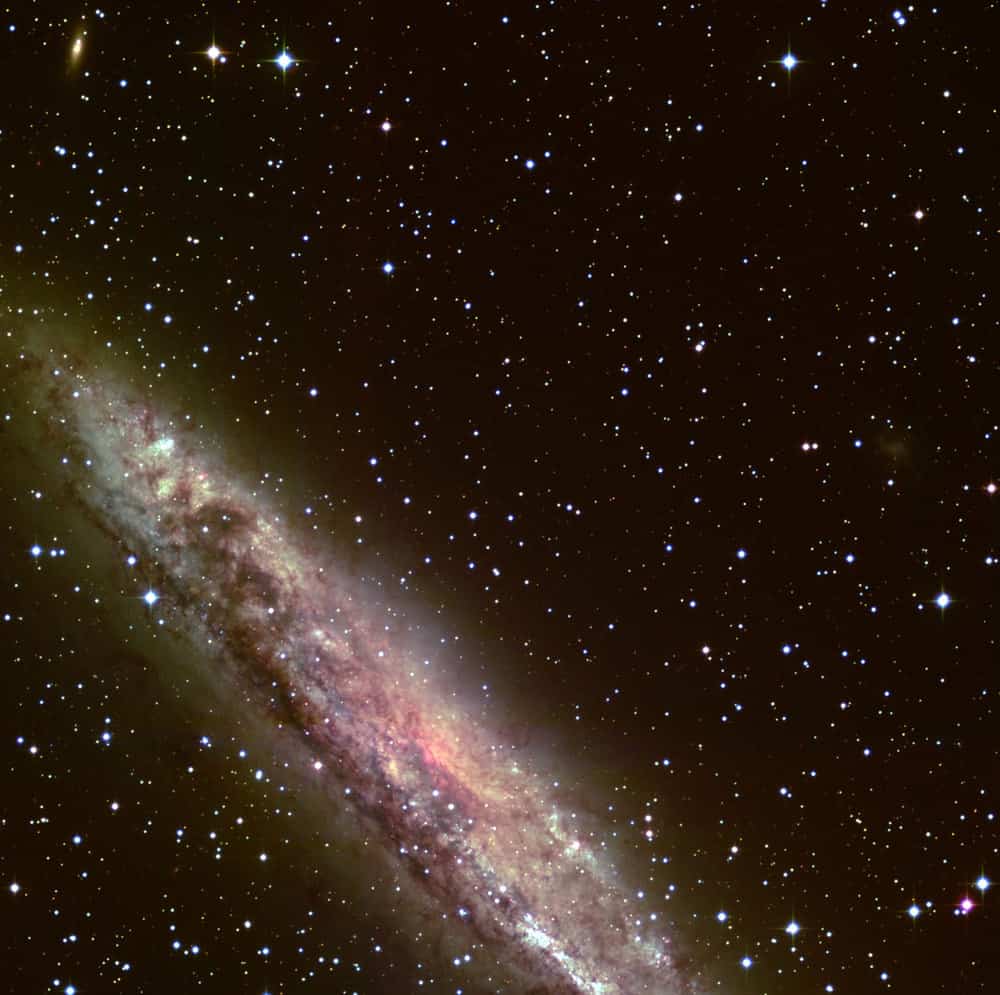
Johnny Shuggie Otis (born Johnny Alexander Veliotes, Jr.; November 30, 1953) is an American singer-songwriter, recording artist, and multi-instrumentalist.
Otis’s composition “Strawberry Letter 23” (as recorded by The Brothers Johnson) topped the Billboard R&B chart and reached #5 of the Billboard Hot 100 chart in 1977. He also achieved commercial success with his 1974 single “Inspiration Information” (from the album of the same title), reaching #56 on the R&B chart.
Born in Los Angeles, California, Otis is the son of rhythm and blues pioneer, musician, bandleader, and impresario Johnny Otis, who was of Greekdescent, and his wife Phyllis Walker, who was of African American and Filipino descent. The name “Shuggie” (short for “sugar,” according to his mother) was coined by Phyllis when he was a newborn. Otis began playing guitar when he was two years old and performing professionally with his father’s band at the age of eleven, often disguising himself with dark glasses and a false mustache so that he could play with his father’s band in after-hours nightclubs.
more...Jack Sheldon (born November 30, 1931) is an American bebop and West Coast jazz trumpeter, singer, and actor. He is a trumpet player and was the music director on The Merv Griffin Show, as well as the voice heard on several episodes of the educational music television series Schoolhouse Rock! Sheldon was born in Jacksonville, Florida, United States. He originally became known through his participation in the West Coast jazz movement of the 1950s, performing and recording with such figures as Art Pepper, Gerry Mulligan, and Curtis Counce. Sheldon played the trumpet, sang, and performed on The Merv Griffin Show. He was Griffin’s sidekick for many years. Prior to joining Griffin’s show, he served as bandleader for the short-lived The Las Vegas Show.
https://www.youtube.com/watch?v=m4ZKqwvuRLs
Walter Brown “Brownie” McGhee (November 30, 1915 – February 16, 1996) was an African-American folk music and Piedmont blues singer and guitarist, best known for his collaboration with the harmonica player Sonny Terry. McGhee was born in Knoxville, Tennessee, and grew up in Kingsport, Tennessee. At about the age of four he contracted polio, which incapacitated his right leg. His brother Granville “Sticks”(or “Stick”) McGhee, who also later became a musician and composed the famous song “Drinkin’ Wine Spo-Dee-o-Dee,” was nicknamed for pushing young Brownie around in a cart. Their father, George McGhee, was a factory worker, known around University Avenue for playing guitar and singing. Brownie’s uncle made him a guitar from a tin marshmallow box and a piece of board.
McGhee spent much of his youth immersed in music, singing with a local harmony group, the Golden Voices Gospel Quartet, and teaching himself to play guitar. He also played the five-string banjo and ukulele and studied piano. Surgery funded by the March of Dimes enabled McGhee to walk.
At age 22, McGhee became a traveling musician, working in the Rabbit Foot Minstrels and befriending Blind Boy Fuller, whose guitar playing influenced him greatly. After Fuller’s death in 1941, J. B. Long of Columbia Records promoted McGhee as “Blind Boy Fuller No. 2.” By that time, McGhee was recording for Columbia’s subsidiary Okeh Records in Chicago, but his real success came after he moved to New York in 1942, when he teamed up with Sonny Terry, whom he had known since 1939, when Terry was Fuller’s harmonica player. The pairing was an overnight success. They recorded and toured together until around 1980. As a duo, Terry and McGhee did most of their work from 1958 until 1980, spending 11 months of each year touring and recording dozens of albums.
more...Robert Lee McCollum (November 30, 1909 – November 5, 1967) was an American blues musician who played and recorded under the pseudonyms Robert Lee McCoy and Robert Nighthawk. He was the father of the blues musician Sam Carr.
McCollum was born in Helena, Arkansas. He left home at an early age and became a busking musician. After a period traveling through southern Mississippi, he settled for a time in Memphis, Tennessee, where he played with local orchestras and musicians, such as the Memphis Jug Band. A particular influence during this period was Houston Stackhouse, from whom he learned to play slide guitar and with whom he performed on the radio in Jackson, Mississippi.
After further travels through Mississippi, he found it advisable to take his mother’s name and, as Robert Lee McCoy, moved to St. Louis, Missouri, in the mid-1930s. Local musicians with whom he played included Henry Townsend, Big Joe Williams, and Sonny Boy Williamson. This led to two recording dates in 1937, the four musicians recording together at the Victor Records studio in Aurora, Illinois, as well as recordings under his own name, including “Prowling Night-Hawk” (recorded 5 May 1937), from which he was to take his later pseudonym. These sessions led to Chicago blues careers for the other musicians, though not for McCoy, who continued his rambling life, playing and recording (for Victor/Bluebird Records and Decca Records) solo and with various other musicians, under various names. Kansas City Red was his drummer from the early 1940s to around 1946. He recorded Kansas City Red’s song “The Moon Is Rising”. McCoy became a familiar voice on local radio stations including WROX. A teenaged Ike Turner joined his band as a roadie in Clarksdale, Mississippi. Then Robert Lee McCoy disappeared. Within a few years, he resurfaced as the electric slide guitarist Robert Nighthawk and began recording for Aristocrat and Chess Records, the latter of which was also Muddy Waters‘s label. In 1949 and 1950, the two men’s styles were close enough that they were in competition for promotional activity. Waters was the more marketable commodity, being more reliable and a more confident stage communicator, and thus received the attention. Nighthawk continued to perform and record, taking up with United Records and States Records 1951 and 1952, but did not achieve great commercial success.
more...
https://www.youtube.com/watch?v=cqiKEWveYCU
more...While it’s common for galaxies to coexist peacefully in the same cosmic neighborhood, these two galaxies are a bit too close for comfort. The galaxies NGC 6286 (right) and NGC 6285 (left), collectively known as Arp 293, are tugging at each other with their mutually strong gravitational attraction, dragging wisps of gas and dust out from the galaxies and into interstellar space. This causes the galaxies to appear “smudged” and blurred from our perspective on Earth. The Hubble Space Telescope captured this image of the galactic pair, which are located more than over 250 million light-years from Earth in the constellation Draco. NGC 6285 is an interacting spiral galaxy located in the constellation Draco. It is designated as S0-a in the galaxy morphological classification schemeand was discovered by the American astronomer Lewis A. Swift in 1886. NGC 6285 is located at about 262 million light years away from earth. NGC 6285 and NGC 6286 form a pair of interacting galaxies, with tidal distortions, categorized as Arp 293 in the Arp Atlas of Peculiar Galaxies.
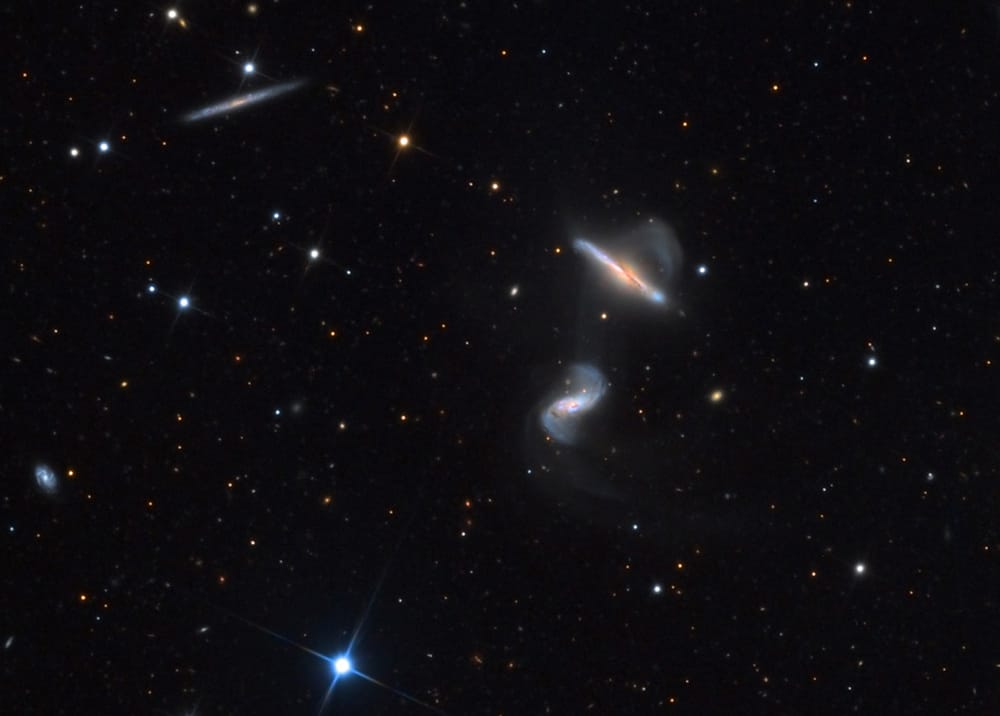
more...
Billy Hart (born November 29, 1940) is an American jazz drummer and educator. Hart was born in Washington, D.C., where early on in his career he performed with soul artists such as Otis Redding and Sam and Dave, and then later with Buck Hill and Shirley Horn, and was a sideman with the Montgomery Brothers (1961), Jimmy Smith (1964–1966), and Wes Montgomery(1966–68). Following Montgomery’s death in 1968, Hart moved to New York, where he recorded with McCoy Tyner, Wayne Shorter, and Joe Zawinul, and played with Eddie Harris, Pharoah Sanders, and Marian McPartland.
Hart was a member of Herbie Hancock‘s sextet (1969–73), and played with McCoy Tyner (1973–74), Stan Getz (1974–77), and Quest (1980s), in addition to extensive freelance playing (including recording with Miles Davis on 1972’s On the Corner).
Since the early 1990s, Hart has been associated with Oberlin Conservatory of Music, and is also adjunct faculty at the New England Conservatory of Music and Western Michigan University. He also conducts private lessons through the New School and New York University. The drummer often contributes to the Stokes Forest Music Camp and the Dworp Summer Jazz Clinic in Belgium.
He has led a group with Mark Turner, Ethan Iverson, and Ben Street, is featured in a trio led by pianist Jean-Michel Pilc, another led by guitarist Assaf Kehati, and has performed in a band known as the Cookers, with Eddie Henderson, David Weiss, Craig Handy, George Cables and Cecil McBee, all who have toured extensively and recorded two CDs. Hart resides in Montclair, New Jersey.
https://www.youtube.com/watch?v=W3lDcLUnpJI
more...John Mayall, OBE (born 29 November 1933) is an English blues singer, guitarist, organist and songwriter, whose musical career spans over sixty years. In the 1960s, he was the founder of John Mayall & the Bluesbreakers, a band which has counted among its members some of the most famous blues and blues rock musicians. Born in Macclesfield, Cheshire in 1933, Mayall was the son of Murray Mayall, a guitarist and jazz music enthusiast. From an early age, John was drawn to the sounds of American blues players such as Lead Belly, Albert Ammons, Pinetop Smith and Eddie Lang, and taught himself to play the piano, guitars, and harmonica.
In 1956, with college fellow Peter Ward, Mayall had founded the Powerhouse Four which consisted of both men and other local musicians with whom they played at local dances. In 1962 Mayall became a member of the Blues Syndicate. The band was formed by trumpeter John Rowlands and alto saxophonist Jack Massarik, who had seen the Alexis Korner band at a Manchester club and wanted to try a similar blend of jazz and blues. It also included rhythm guitarist Ray Cummings and drummer Hughie Flint, whom Mayall already knew. In 1962 John and his band were frequent and popular artists at all night R&B sessions at the ‘Twisted Wheel’ cellar club in central Manchester. Alexis Korner persuaded Mayall to opt for a full-time musical career and move to London, where Korner introduced him to many other musicians and helped them to find gigs. In late 1963, with his band, which was now called the Bluesbreakers, Mayall started playing at the Marquee Club. The line-up was Mayall, Ward, John McVie on bass and guitarist Bernie Watson, formerly of Cyril Davies and the R&B All-Stars. The next spring Mayall obtained his first recording date with producer Ian Samwell. The band, with Martin Hart at the drums, recorded two tracks : “Crawling Up a Hill” as well as “Mr. James.” Shortly after, Hughie Flint replaced Hart and Roger Dean took the guitar from Bernie Watson. This line-up backed John Lee Hooker on his British tour in 1964.
Mayall was offered a recording contract by Decca and, on 7 December 1964, a live performance of the band was recorded at the Klooks Kleek. A later studio-recorded single, “Crocodile Walk”, was released along with the album, but both failed to achieve any success and the contract was terminated.
In April 1965 former Yardbirds guitarist Eric Clapton replaced Roger Dean and John Mayall’s career entered a decisive phase.
William Thomas Strayhorn (November 29, 1915 – May 31, 1967) was an American jazz composer, pianist, lyricist, and arranger, best remembered for his long-time collaboration with bandleader and composer Duke Ellington that lasted nearly three decades. His compositions include “Take the ‘A’ Train“, “Chelsea Bridge“, “A Flower Is a Lovesome Thing“, and “Lush Life“.
Strayhorn was born in Dayton, Ohio. His family soon moved to the Homewood section of Pittsburgh, Pennsylvania. However, his mother’s family was from Hillsborough, North Carolina, and she sent him there to protect him from his father’s drunken sprees. Strayhorn spent many months of his childhood at his grandparents’ house in Hillsborough. In an interview, Strayhorn said that his grandmother was his primary influence during the first ten years of his life. He first became interested in music while living with her, playing hymns on her piano, and playing records on her Victrola record player.
more...
More Posts
- Chick Willis
- World Drumming Babatunde Olatunji
- Daily Roots Cornell Campbell
- Happy Birthday Mario
- Cosmos Milky Way Mt Shasta
- Kenny Kirkland
- Ben E King
- Ko Ko Taylor
- John Gilmore
- World Music Banda Magda
- Daily Roots KC White
- Cosmos M33
- Red Rodney
- Earring George Mayweather
- Bud Powell
- World Music Ruken Yilmaz
- Daily Roots The Gladiators
- Cosmos NGC 5495
- Gary Bartz
- Vic Juris